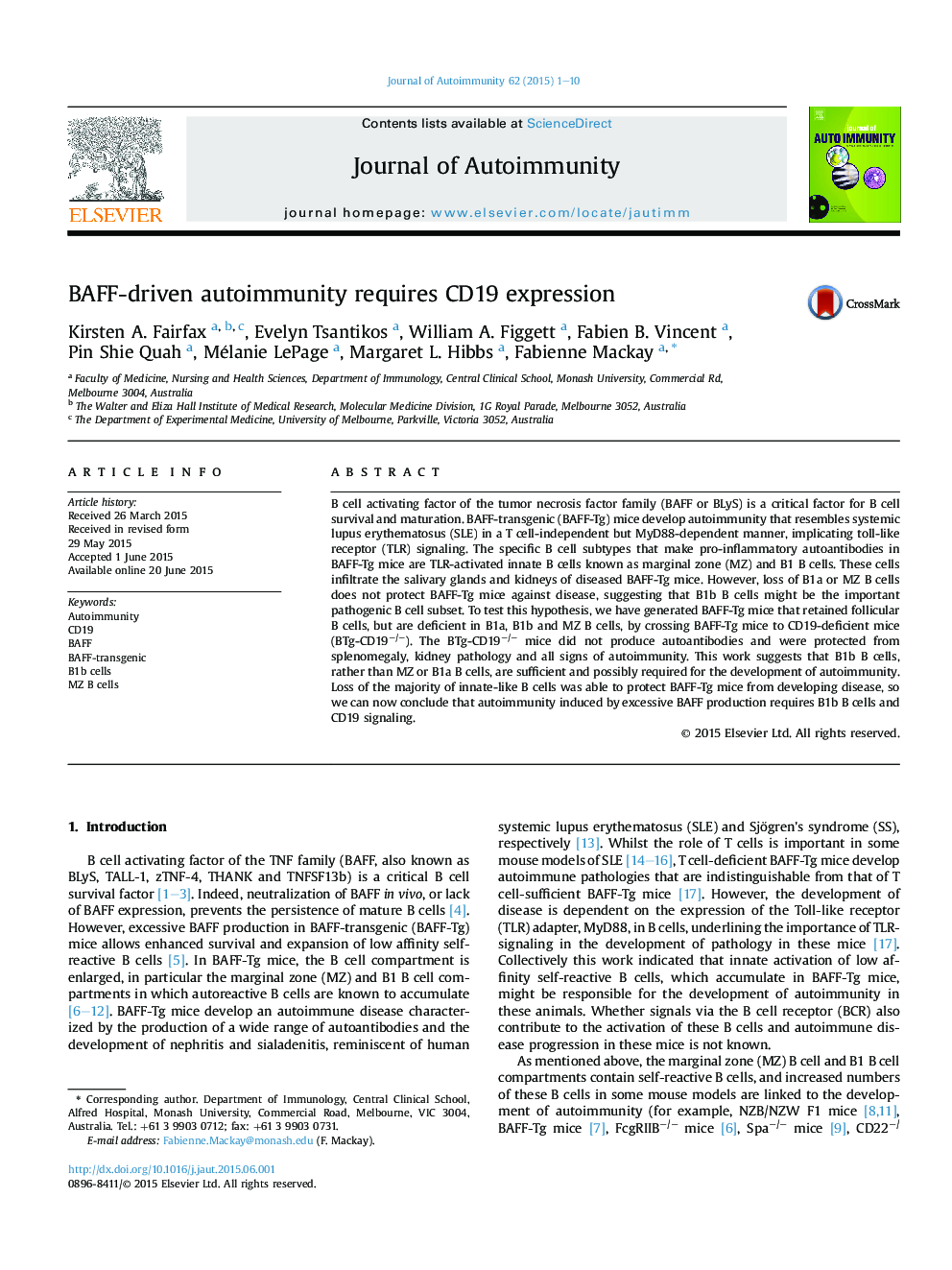| Article ID | Journal | Published Year | Pages | File Type |
|---|---|---|---|---|
| 3367679 | Journal of Autoimmunity | 2015 | 10 Pages |
•BAFF-Tg mice develop autoimmunity, genetic deletion of CD19 on the BAFF-Tg background protects from this autoimmunity.•BAFF-Tg-CD19−/− mice resemble CD19−/− mice with respect to B cell subset development.•This work puts the spotlight on B1b cells as triggers for autoimmunity in BAFF-Tg mice.
B cell activating factor of the tumor necrosis factor family (BAFF or BLyS) is a critical factor for B cell survival and maturation. BAFF-transgenic (BAFF-Tg) mice develop autoimmunity that resembles systemic lupus erythematosus (SLE) in a T cell-independent but MyD88-dependent manner, implicating toll-like receptor (TLR) signaling. The specific B cell subtypes that make pro-inflammatory autoantibodies in BAFF-Tg mice are TLR-activated innate B cells known as marginal zone (MZ) and B1 B cells. These cells infiltrate the salivary glands and kidneys of diseased BAFF-Tg mice. However, loss of B1a or MZ B cells does not protect BAFF-Tg mice against disease, suggesting that B1b B cells might be the important pathogenic B cell subset. To test this hypothesis, we have generated BAFF-Tg mice that retained follicular B cells, but are deficient in B1a, B1b and MZ B cells, by crossing BAFF-Tg mice to CD19-deficient mice (BTg-CD19−/−). The BTg-CD19−/− mice did not produce autoantibodies and were protected from splenomegaly, kidney pathology and all signs of autoimmunity. This work suggests that B1b B cells, rather than MZ or B1a B cells, are sufficient and possibly required for the development of autoimmunity. Loss of the majority of innate-like B cells was able to protect BAFF-Tg mice from developing disease, so we can now conclude that autoimmunity induced by excessive BAFF production requires B1b B cells and CD19 signaling.
